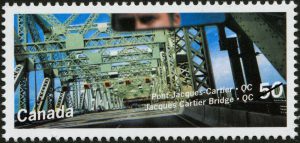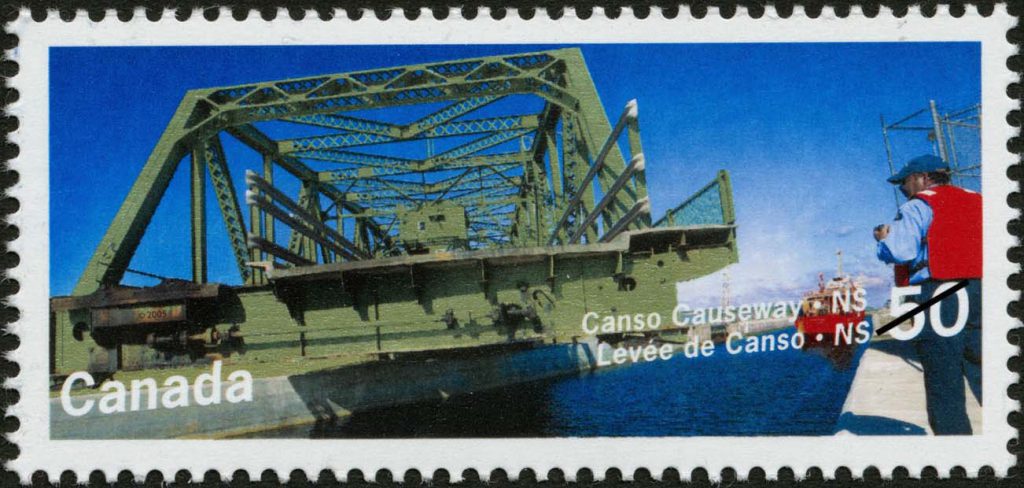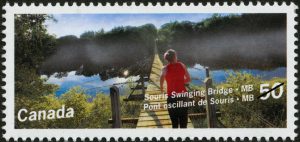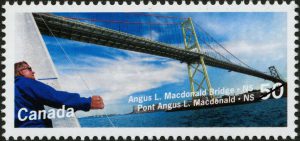On today’s date in 1955, the Canso Causeway opened to traffic, linking Cape Breton Island to the Nova Scotia mainland over the Strait of Canso.
The opening of the causeway – a path, road or railway atop an embankment across low or wet ground – drew several thousand people to a gala parade of what was supposed to be 100 bagpipers heralding Cape Breton’s new road connection to the North American mainland; however, the 100th bagpiper refused to pipe.
Shortly before the day of the opening, Roderick Cameron Colin MacPherson – better known as “Big Rod the Piper,” according to a 1955 story in the Cape Breton News – decided the new causeway wasn’t a cause for celebration.
“It’s progress that you call it. Progress,” said MacPherson. “To join this island which is Cape Breton to the rest of the land, to link this island and to make forever impossible again the thrill that one senses as he crosses over that water and sees in the distance the powerful hills of home. Departed for all time the sensation of touching again the earth which is Cape Breton, and to know that it is home you are. Not again to feel your pulse quicken and your nostrils quiver and your heart fairly pound as you experience the sensation that you’ve shaken from your feet and body and mind the dust and worldliness and quickened pace that is the far country. Not again to lean over the rails of that boat and see the tiny spires of the home churches among the lush green of our countryside, the cattle grazing on the hills, the soft murmur of the waves as they beat against the boat’s side – the message that it’s home you’re heading again.

The Jacques Cartier Bridge is also featured on a 50-cent stamp issued in 2005 as part of the ‘Canadian Bridges’ set.
“To see the outward-bound boat heading for the other shore and have denied you the compassion and the pity which you suffer for those who are leaving this land which is Cape Breton. Progress, you call it? Is that progress? To make Cape Breton for a few feet of locks a part of the mainland? True, we can get to the other side now 20 minutes faster than before, but who wants to get away from Cape Breton any faster than he used to? Likewise too, the others can get to Cape Breton with some saving of time, but to come this way’s deserving of a languid, slow pace that makes one relish what lies ahead.
“Progress? They weren’t satisfied with the roads we Cape Bretoners made with our brawn and our sweat and our energy. They paved them. And what happens? Instead of enjoying the finest scenery in the world, bar none, they’re so busy trying to make a trip around the Cabot Trail that the only people prospering from the thing are the garage owners. The Causeway will bring more and more cars over to go faster and faster over more and more roads and maim more people for less and less reasons.”
2005 BRIDGE STAMPS
In 2005, in celebration of the causeway’s 50th anniversary, Canada Post issued a 50-cent Canso Causeway stamp (Scott #2103) as part of its “Canadian Bridges” issue.
Printed by the Canadian Bank Note Company on Tullis Russell paper using 10-colour lithography, each stamp has general tagging along all sides and measures 56 millimetres by 26 millimetres (horizontal).
The other bridges featured in the four-stamp issue include Québec’s Jacques Cartier Bridge (SC #2100); Manitoba’s Souris Swinging Bridge (SC #2101); and Nova Scotia’s Angus L. Macdonald Bridge (SC #2103).
The Canso Causeway stamp’s angled type underlines the fact the bridge is moving. The causeway is connected through a fixed link of rock built up from the ocean’s floor, and a swing bridge at its northern end opens to accommodate sea traffic. The stamp shows the causeway’s bridge closing behind a Coast Guard ship plus another composite image of two different photographs, both taken at the scene.
“These are real action photos,” said Stephen Boake, creative director of Toronto’s Designwerke. “Bridges are built for people to use. While their engineering and design features are interesting, we wanted to show how people interact with these bridges every day.”



